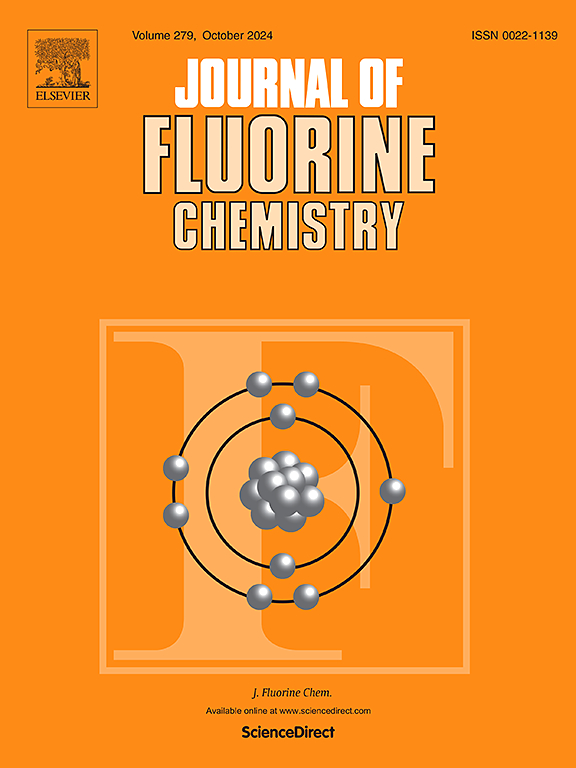Physicochemical characterization of fluoride solid electrolyte PbSnF4 synthesized via sonochemical reaction
IF 1.7
4区 化学
Q3 CHEMISTRY, INORGANIC & NUCLEAR
引用次数: 0
Abstract
Demand for batteries with enhanced energy density and improved thermal safety is a key focus for researchers striving to build a sustainable environment. As fluoride ion batteries (FIB) are expected to exhibit high energy density and exceptional thermal stability, research activities are focused on identifying fluoride ion-conducting electrolytes. Among the various fluoride ion conductors, PbSnF4, renowned for its superior ionic conductivity, is typically synthesized via mechanochemical reaction. In the present work, PbSnF4 was synthesized via an acoustic cavitation-driven sonochemical reaction. This novel synthesis route has reduced the duration of the synthesis process to a few minutes compared with several hours for the mechanochemical reaction. The structural, morphological, and ionic transport properties are investigated. The ionic conductivity of the resulting orthorhombic PbSnF4 is evaluated to be 4.5 × 10⁻4 S/cm at RT. The contribution of fluoride ions to the total ionic conductivity is estimated via the DC polarization technique as 0.92. The electrochemical stability window (ESW) is measured through cyclic voltammetry (CV) as 0.7 V with PbF2/PbSnF4/SS cell configuration.

声化学合成氟固体电解质PbSnF4的理化性质
对具有更高能量密度和更好热安全性的电池的需求是研究人员努力建立可持续环境的关键焦点。由于氟离子电池预计将表现出高能量密度和特殊的热稳定性,研究活动的重点是确定氟离子导电电解质。在各种氟化物离子导体中,PbSnF4以其优异的离子电导率而闻名,通常是通过机械化学反应合成的。本研究采用声空化驱动的声化学反应合成了PbSnF4。这种新的合成路线将合成过程的持续时间从机械化学反应的几个小时缩短到几分钟。研究了其结构、形态和离子输运性质。得到的正交PbSnF4的离子电导率在室温下估计为4.5 × 10⁻4 S/cm。通过直流极化技术估计氟离子对总离子电导率的贡献为0.92。在PbF2/PbSnF4/SS电池结构下,通过循环伏安法(CV)测量电化学稳定窗口(ESW)为0.7 V。
本文章由计算机程序翻译,如有差异,请以英文原文为准。
求助全文
约1分钟内获得全文
求助全文
来源期刊

Journal of Fluorine Chemistry
化学-无机化学与核化学
CiteScore
3.80
自引率
10.50%
发文量
99
审稿时长
33 days
期刊介绍:
The Journal of Fluorine Chemistry contains reviews, original papers and short communications. The journal covers all aspects of pure and applied research on the chemistry as well as on the applications of fluorine, and of compounds or materials where fluorine exercises significant effects. This can include all chemistry research areas (inorganic, organic, organometallic, macromolecular and physical chemistry) but also includes papers on biological/biochemical related aspects of Fluorine chemistry as well as medicinal, agrochemical and pharmacological research. The Journal of Fluorine Chemistry also publishes environmental and industrial papers dealing with aspects of Fluorine chemistry on energy and material sciences. Preparative and physico-chemical investigations as well as theoretical, structural and mechanistic aspects are covered. The Journal, however, does not accept work of purely routine nature.
For reviews and special issues on particular topics of fluorine chemistry or from selected symposia, please contact the Regional Editors for further details.
 求助内容:
求助内容: 应助结果提醒方式:
应助结果提醒方式:


